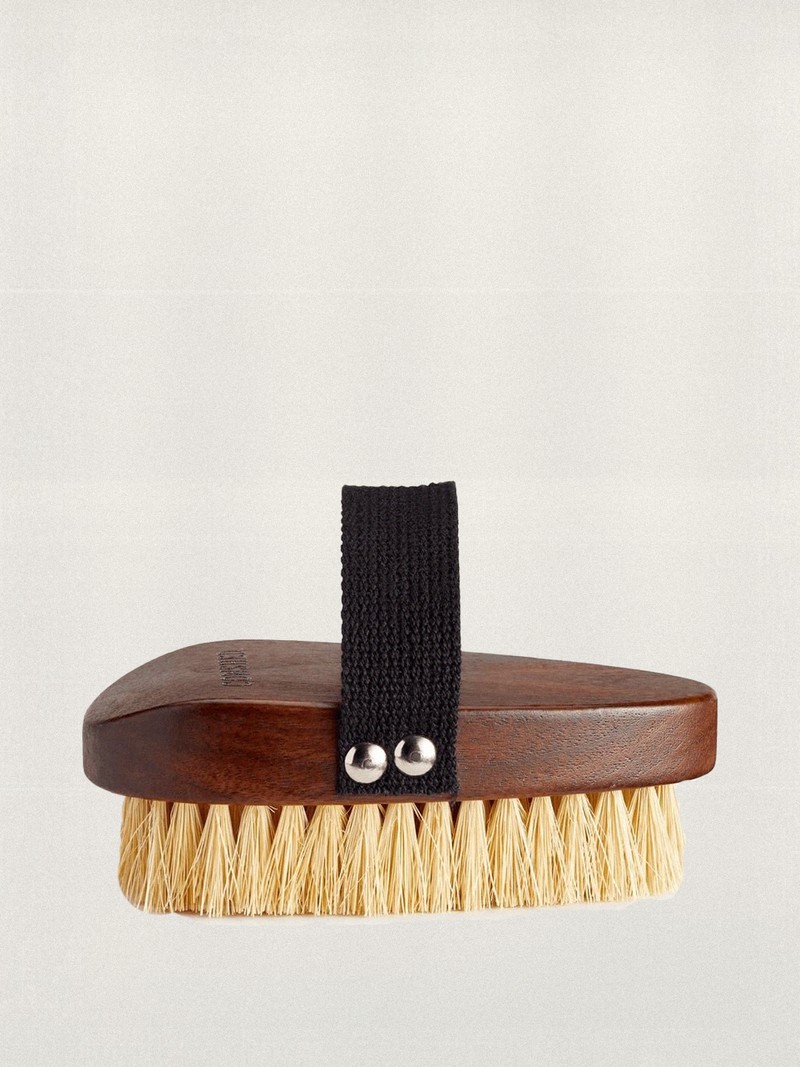
6 Bodycare Buys For A Smoother Shave
The Scrub
The Body Exfoliator, £30 | Nécessaire
Exfoliation before shaving is vital for preventing ingrown hairs. Cool-girl brand Nécessaire is known for its bodycare heroes, and this polish is a great one to try if you’re after the best of both. Powered by a cocktail of physical (volcanic pumice and bamboo charcoal) and chemical (salicylic, lactic and glycolic acids) exfoliants, it sloughs away dead skin cells and clears follicles of build-up. Plus, the uplifting eucalyptus scent will make an early start feel all the more bearable.
Available at SPACENK.COM
The Brush
Dry Skin Brush, £20 | Cowshed
For those who prefer manual exfoliation but aren’t into the grainy feel of a scrub, a brush is a game-changer. Criminally underrated as far as beauty accessories go, it works to buff away dead skin cells while simultaneously stimulating blood flow – such a soothing activity if you need to unwind. You needn’t spend a fortune on a brush, and there’s something really elegant about Cowshed’s walnut wood and sisal version.
Available at COWSHED.COM
The Oil
Stillness Shower Oil, £42 | Wildsmith Skin
If foams and gels leave your skin feeling stripped of moisture, go for an oil that adds extra glide, allowing blades to run seamlessly over the skin’s surface. Full of nourishing fatty acids, this formula by Wildsmith is our current shower obsession. It restores that healthy bounce, and the slightly silky residue that lingers long after you’ve got out of the shower is impossible to beat.
Available at WILDSMITHSKIN.COM
The Soap
Butter Brick, £14 | Mirror Water
So many soap bars look and smell delightful but miss the mark on comfort, leaving skin feeling tight and squeaky due to the high pH. Mirror Water’s Butter Brick is not only understated and cool, but actually creates a supple, hydrated feel thanks to its nourishing ingredient list. Formulated with shea butter, coconut oil and rapeseed oil, it gives way to soft, milky suds rather than a full-blown foam, making it the perfect shaving companion.
Available at SPACENK.COM
The Butter
Moringa Luxury Body Butter, £38 | Emma Hardie
Shaving affects the lipid layer of your epidermis, so it’s essential to replenish hydration levels afterwards. Brimming with botanical oils, this Emma Hardie body butter is guaranteed to leave your skin looking renewed and plump. It has such a luxurious, velvety texture and sinks into the skin quickly, leaving behind no grease. Also, the soothing scent has an enveloping, spa-like quality.
Available at SPACENK.COM
The Razor
Starter Kit, £9.95 | Estrid
A smooth shave calls for a quality razor, and you’d be surprised at how often you ought to change the blades – every five to seven shaves is the recommendation. Dullness and bacteria build-up can result in irritation among other skin issues, so if you’re guilty of forgetting to swap out your blades, it may be worth looking into subscription service Estrid. This is the razor we find ourselves constantly reaching for – super sharp, comfortably weighty and fitted with a generous hydration bar to minimise friction.
Available at BOOTS.COM
DISCLAIMER: We endeavour to always credit the correct original source of every image we use. If you think a credit may be incorrect, please contact us at info@sheerluxe.com.







